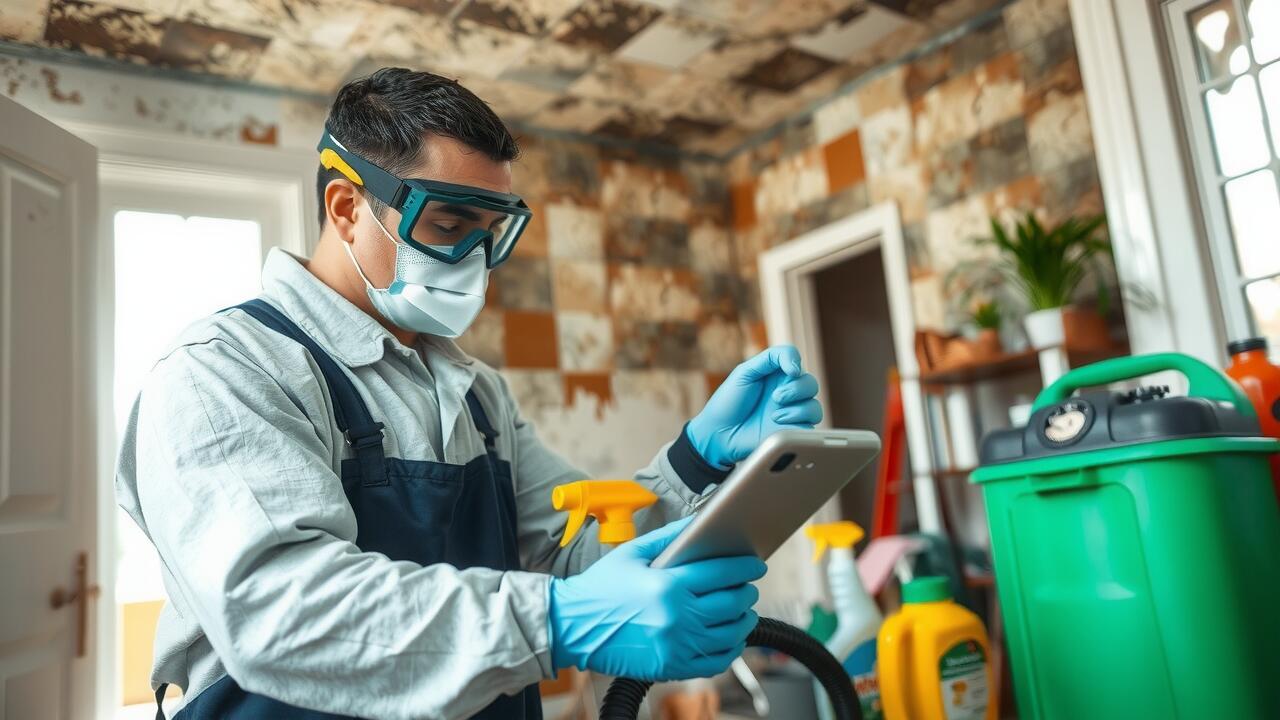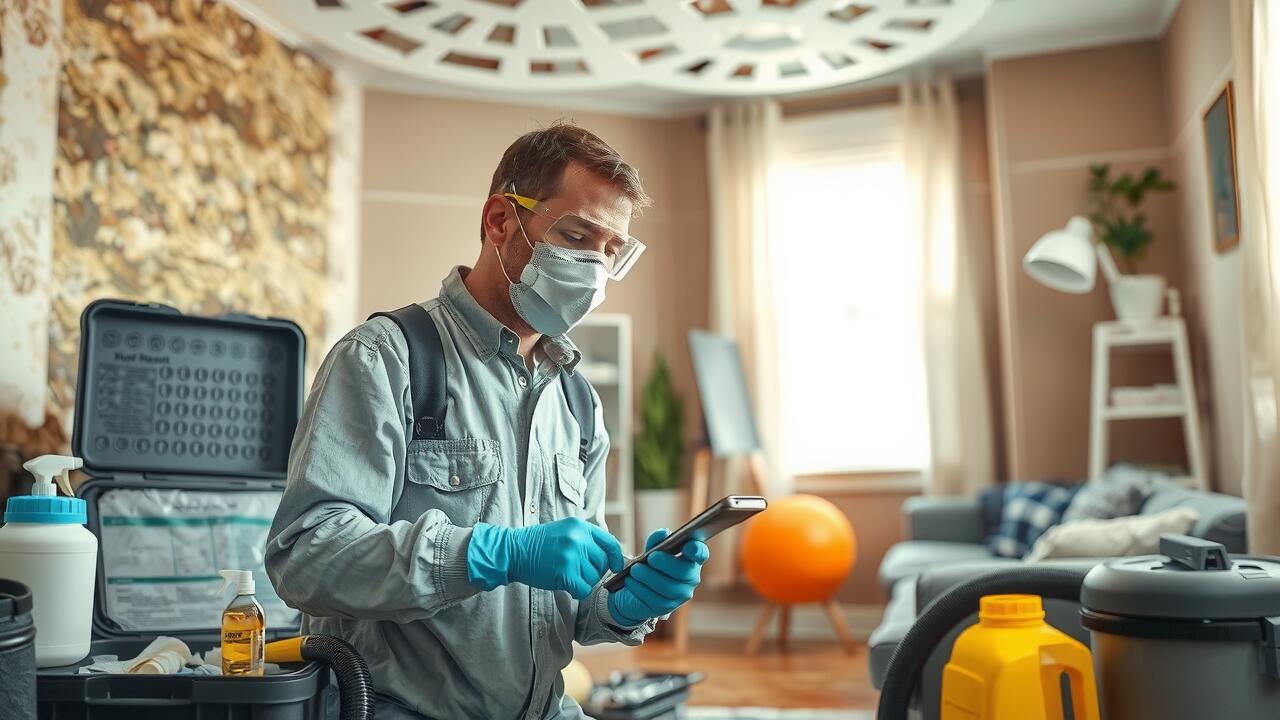
Hidden Mold Issues and Their Costs
Hidden mold issues can pose significant risks to both health and property, often leading to costly remediation efforts. Homeowners may not be aware of mold until it becomes visibly evident or until they encounter health concerns. When mold is hidden behind walls, in attics, or under flooring, the costs associated with its removal can escalate quickly. In addition to the direct costs for mold remediation, affected homeowners may also face expenses related to repairs from water damage, structural issues, and potential legal liabilities if the mold creates unsafe living conditions.
Mold Remediation in Grove City, Ohio, generally reflects these variables. The regional climate and prevalence of moisture contribute to the likelihood of hidden mold issues, altering the price landscape for remediation services. Homeowners should consider the extent of the infestation and the necessary measures to properly eliminate mold when budgeting for remediation. Engaging professionals who evaluate both visible and hidden mold problems can help prevent more extensive damage and higher costs in the long run.
Identifying Hidden Mold Problems
Identifying hidden mold problems often involves a thorough inspection of areas not readily visible, such as behind walls, under carpets, or in attics and basements. Homeowners should be vigilant about moisture issues and water leaks, which can create ideal conditions for mold growth. Signs like a musty odor or discoloration on surfaces may not always indicate visible mold, prompting the need for professional evaluation to determine the extent of the problem.
Mold Remediation in Grove City, Ohio, typically emphasizes the importance of addressing moisture control to prevent recurrence. Homeowners are advised to regularly check for any signs of water damage or leaks. Timely identification can significantly reduce the cost of remediation and restore a healthy living environment. Engaging with professionals trained in mold detection can facilitate the discovery of hidden infestations before they escalate into larger issues.
Geographic Variations in Mold Remediation Pricing
Mold remediation costs can vary significantly based on geographic location. In densely populated urban areas, demand for mold remediation services often drives prices higher compared to rural locations. Factors such as local cost of living and availability of qualified professionals play a key role in this variation. For instance, Mold Remediation in Grove City, Ohio, may be more affordable than in metropolitan hubs where competition is fierce and labor costs rise.
Additionally, regional climate influences can impact mold growth and the subsequent remediation efforts needed. Humid climates may lead to more frequent mold issues, prompting higher service costs in those areas. Conversely, regions with less humidity might experience fewer mold problems, resulting in lower demand for remediation services. Understanding these regional nuances can help homeowners better anticipate potential expenses when addressing mold concerns in their specific area.
Regional Cost Differences
Regional variations significantly impact the costs associated with mold remediation. Urban areas typically witness higher pricing due to increased demand for services and a higher cost of living. Conversely, rural regions often offer more competitive rates as the availability of service providers may be limited. Furthermore, local regulations may influence pricing structures, as some regions require specific certifications for mold remediation experts.
Mold Remediation in Grove City, Ohio, may reflect these regional dynamics. Homeowners might find that prices vary depending on the extent of the infestation and the type of remediation needed. Additionally, availability of trained professionals in the area could result in pricing differences compared to neighboring towns. Understanding these factors can help homeowners budget more effectively for their mold remediation needs.
Warning Signs of Mold Problems
Recognizing mold infestations early can prevent more extensive damage and costly remediation efforts. Common warning signs include a persistent musty odor, which often indicates hidden mold growth in areas like walls and ceilings. Water stains or discoloration on surfaces may also signal the presence of mold. Additionally, visible mold patches in damp or humid areas are direct indicators that immediate action is needed.
Homeowners should also be vigilant for health symptoms that might arise from mold exposure. These can include respiratory issues, skin irritation, and allergic reactions. Such symptoms, combined with visual cues of mold growth, suggest the need for professional evaluation and potential mold remediation in Grove City, Ohio. Being proactive in recognizing these signs can save homeowners time and money in the long run.
Recognizing Mold Infestations
Mold infestations can often go unnoticed until they have caused significant damage. Common warning signs include a persistent musty odor, which is often the first clue that mold may be present. Stains or discoloration on walls, ceilings, or floors can also indicate moisture problems and potential mold growth. Homeowners should be vigilant in areas prone to humidity, such as basements, kitchens, and bathrooms. If you notice these signs, it’s crucial to act quickly to prevent further issues.
In Grove City, Ohio, the local climate can contribute to mold growth, making awareness essential for homeowners. Flooding, leaks, or high humidity levels can create ideal conditions for mold spores to thrive. Regular inspections and maintenance of household areas prone to moisture can help mitigate mold risks. Being proactive can lead to timely interventions and reduce the need for costly Mold Remediation in Grove City, Ohio.
FAQS
What factors influence the cost of mold remediation?
Several factors can influence the cost of mold remediation, including the size of the affected area, the severity of the mold infestation, the type of mold present, and the required remediation methods. Additional costs may arise from the need for repairs or renovations after the mold is removed.
How do geographic locations affect mold remediation costs?
Geographic locations can significantly affect the costs of mold remediation due to variations in local labor rates, the availability of specialized contractors, and regional regulations regarding mold removal. Urban areas may have higher costs compared to rural locations.
Is it possible to estimate the cost of mold remediation without a professional inspection?
While rough estimates can be made based on square footage and visible mold severity, it’s advisable to have a professional inspection for a more accurate assessment. Professionals can identify hidden mold issues and provide a detailed cost estimate based on the specific circumstances.
Are there any additional costs associated with mold remediation?
Yes, additional costs may include air quality testing, repairs to damages caused by mold, and potential relocation expenses if the home needs to be vacated during the remediation process. These factors should be considered when budgeting for mold remediation.
How can I prevent mold from returning after remediation?
To prevent mold from returning, it’s essential to address moisture issues in your home, such as fixing leaks and improving ventilation. Regular inspections and maintaining humidity levels below 60% can also help in preventing mold growth in the future.
